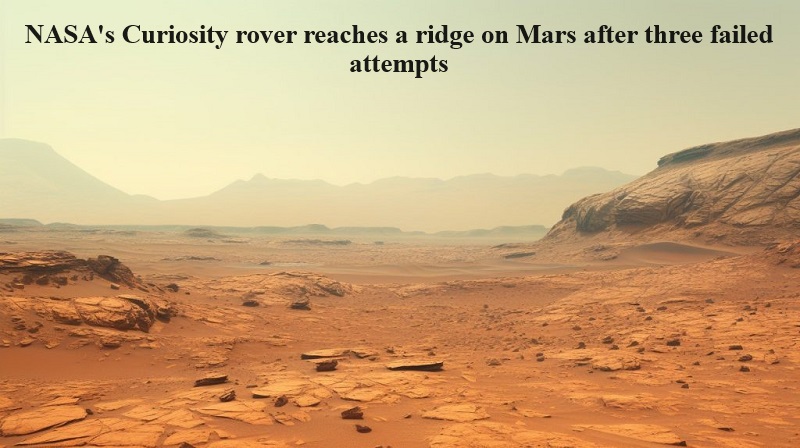
After three unsuccessful attempts, NASA’s Curiosity rover has finally reached a ridge on Mars, believed to have been partially shaped by a muddy landslide that occurred three billion years ago.
A ridge is a narrow, elongated, and elevated geological feature with steep sides. The Martian Ridge holds particular importance because it might contain some of the earliest indications of liquid water on the red planet, as it was one of the last geological features to form in the region.
Ashwin Vasavada, the project scientist for Curiosity at NASA’s Jet Propulsion Laboratory, expressed excitement, stating, “It’s a thrill to be able to reach out and touch rocks, transported from places high up on Mount Sharp that we’ll never be able to visit with Curiosity.”
The climb up the Gediz Vallis Ridge was a month-long endeavor for the Curiosity rover. It overcame its most challenging ascent yet, navigating a steep 23-degree incline, slippery sand, and rocks approximately the size of its wheels.
Upon reaching the ridge in August, the rover spent 11 days examining the rocks in the area, some of which were as large as cars.
On August 19, Curiosity captured 136 images of the broader landscape on the ridge, stitching them together into a 360-degree panoramic view.
Additionally, Curiosity captured a separate image showing the upper region of Mount Sharp in the distance, situated behind a prominent butte (a flat-topped mountain) in the foreground.
This ridge is situated along Curiosity rover’s route through the foothills of Mount Sharp, a towering 3-mile-tall mountain that was once characterized by lakes and streams.
Scientists who studied the composition of numerous dark rocks and boulders on the ridge concluded that these rocks originated from somewhere on the mountain and were transported downhill by debris flows. These rocks could provide insights into studying higher mountain regions inaccessible to Curiosity.
In August 2023, the Curiosity rover marked its 11th year of exploration on the Red Planet. During its journey, Curiosity has ventured to remarkable locations, including Gale Crater, an impact depression with a central layered mountain.
In its upcoming mission, Curiosity will attempt to explore a path above the ridge in a channel. This task may help researchers understand the flow of water down the mountains and its pathways.
While NASA’s Curiosity and Perseverance rovers have not yet discovered evidence of past life on Mars, they have contributed significantly to our understanding of Mars’ more hospitable history.

Post Your Comments